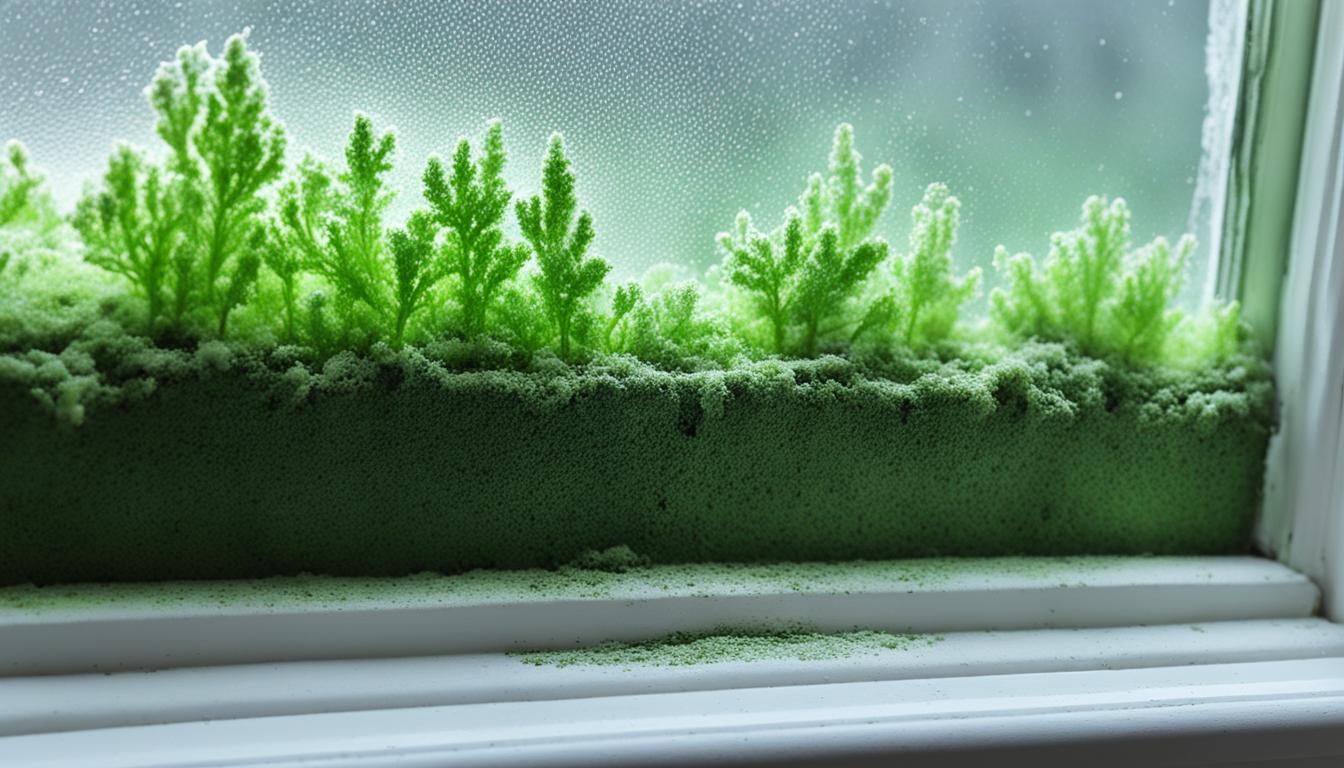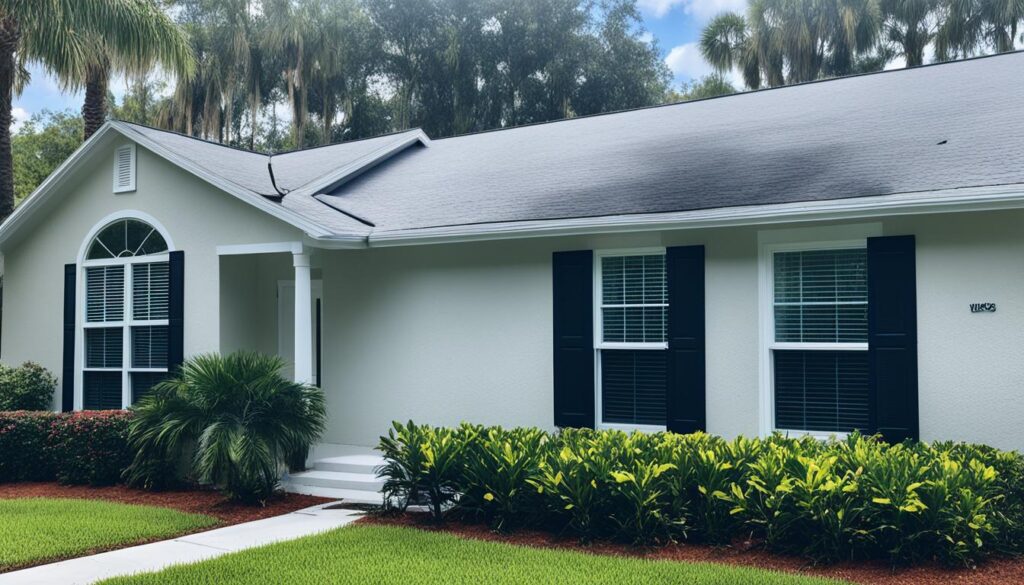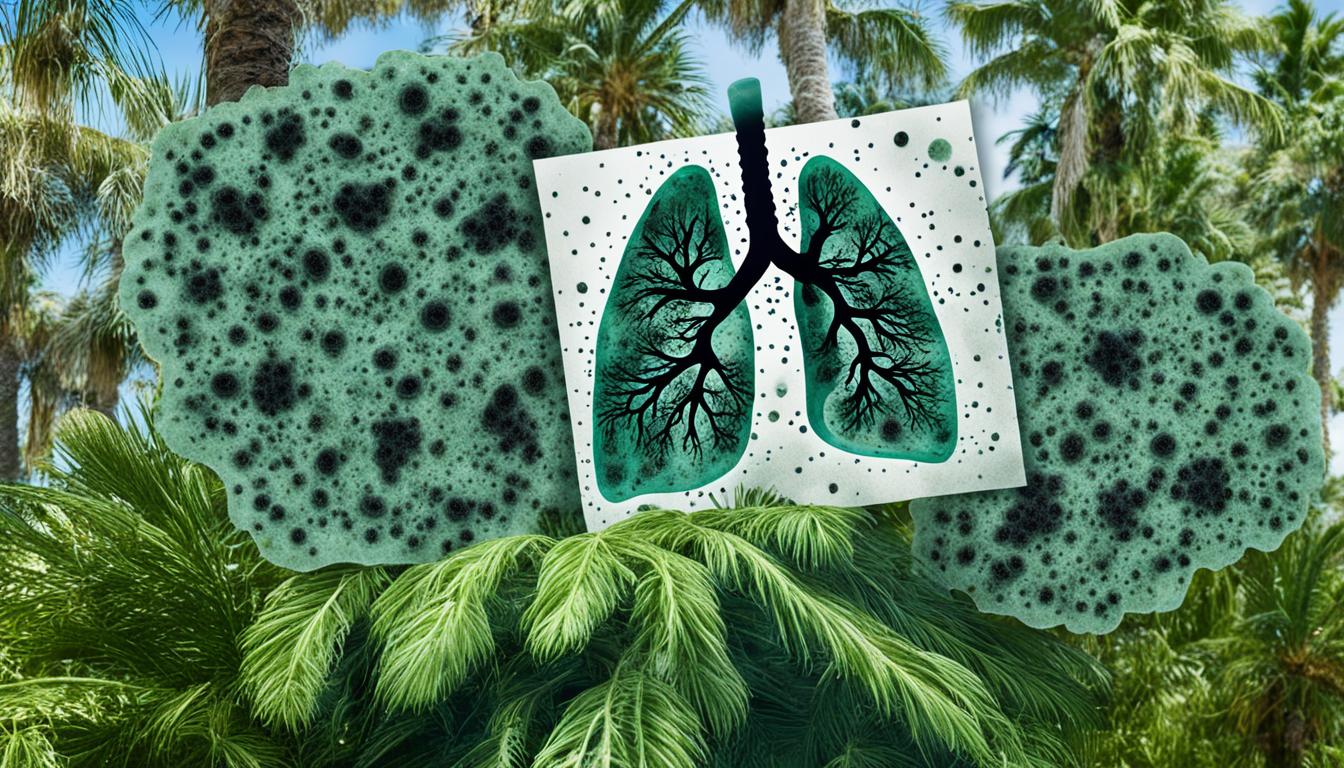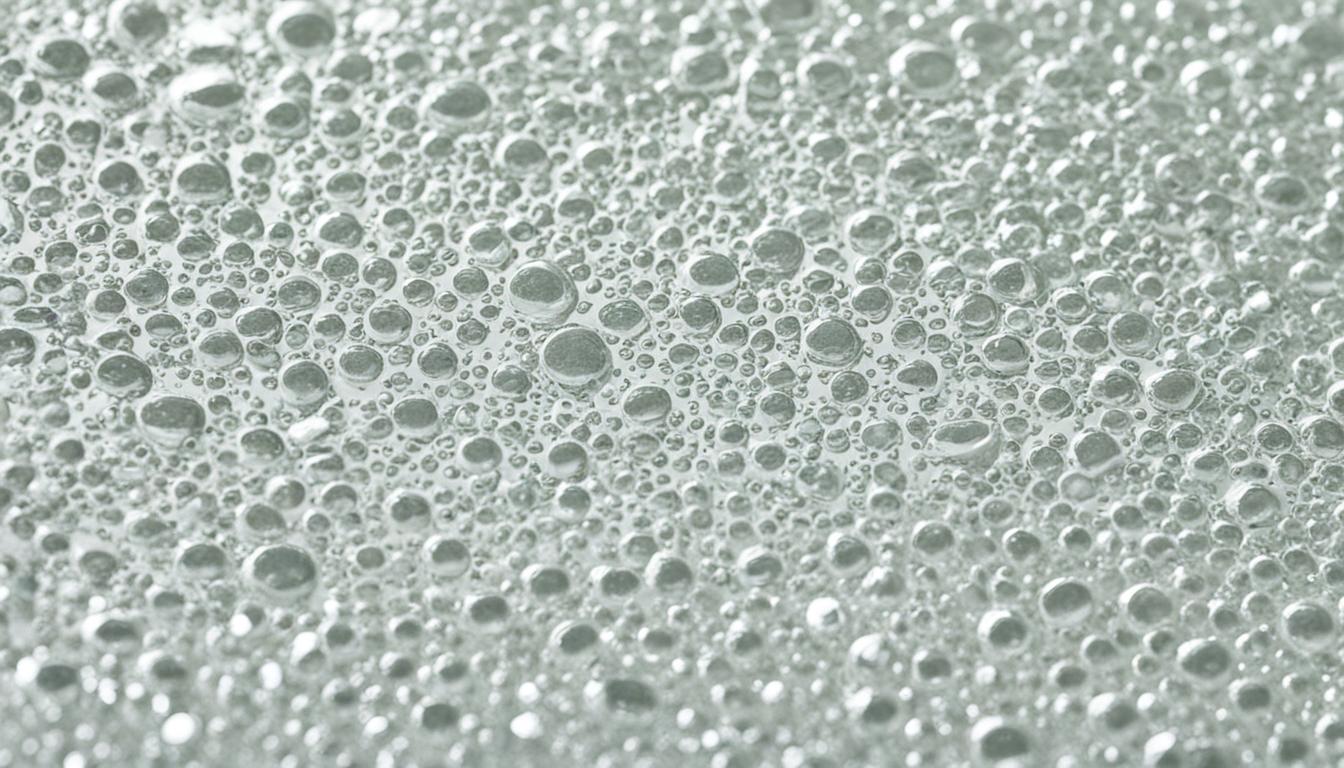
Combat House Mold Florida: Prevention & Removal Tips
Welcome to our comprehensive guide on combating house mold in Florida! In this article, we will provide you with valuable prevention and removal tips to ensure the health and safety of your home. Florida’s warm and humid climate creates an ideal breeding ground for mold, making it crucial to take proactive measures to protect your property.
Mold growth can be a serious issue as it not only damages the structural integrity of your home but also poses potential health risks to you and your family. That’s why understanding the impact of house mold in Florida is essential before diving into prevention and removal techniques.
Key Takeaways:
- Florida’s warm and humid climate creates an ideal environment for house mold growth.
- Mold growth can damage the structural integrity of your home and pose health risks.
- Prevention strategies and proper maintenance are crucial to combat mold growth in Florida.
- Effective removal techniques should be employed to mitigate mold infestations.
- Maintaining a healthy living environment requires a combination of prevention and removal.
Now that we have set the stage, let’s delve into the impact of house mold in Florida and learn how to effectively prevent and remove it from your home. By following the expert advice provided in this guide, you can safeguard your Florida home and ensure a mold-free environment for years to come.
Understanding the Impact of House Mold in Florida
Before diving into prevention and removal techniques, it’s crucial to understand the impact that house mold can have on your Florida home. Mold growth in houses, especially in the humid climate of Florida, can lead to various dangers and potential health risks.
Exposure to house mold can trigger respiratory problems, allergies, and other health issues. Individuals with weakened immune systems, allergies, asthma, or pre-existing respiratory conditions are particularly susceptible to the adverse effects of mold. In some cases, prolonged exposure to certain types of mold can even cause more severe health complications.
Mold spores can spread through the air and contaminate the indoor environment. As these spores settle on different surfaces, they can lead to the deterioration of building materials, causing structural damage to walls, ceilings, and other areas of your home. Additionally, mold growth can result in unpleasant musty odors, which can be difficult to eliminate without addressing the underlying cause.
To understand the full impact of house mold in Florida, it’s essential to consider its effects on both your health and the structural integrity of your home. By being aware of these risks, you can take the necessary steps to prevent mold growth and maintain a safe living environment.
The Effects of House Mold on Health
House mold in Florida can have detrimental effects on your health. Exposure to mold spores can trigger respiratory problems, allergies, and other health issues, especially for individuals with weakened immune systems or pre-existing respiratory conditions.
The Effects of House Mold on Building Materials
Mold growth in houses can lead to the deterioration of building materials, causing structural damage to walls, ceilings, and other areas of your home. It’s important to address mold growth promptly to prevent further damage and ensure the longevity of your property.
Now that we have explored the impact of house mold in Florida, it’s time to delve into effective prevention strategies. In the next section, we will discuss key measures you can take to keep mold at bay and maintain a healthy living space in the Florida climate.
Prevention Strategies for House Mold in Florida
Taking proactive measures to prevent house mold is essential for maintaining a healthy living space. In Florida, where the warm and humid climate provides the perfect breeding ground for mold growth, it becomes even more crucial to implement effective prevention strategies. By addressing the root causes of mold formation and creating an unfavorable environment for its development, you can protect your home and your family’s well-being.
1. Control Moisture Levels
Moisture control is key to preventing the growth of house mold. Start by identifying and fixing any leaks or water intrusion points in your home. Inspect your roof, plumbing system, and windows regularly for any signs of moisture problems. Ensure proper drainage away from the foundation and use dehumidifiers in areas prone to high humidity, such as bathrooms and basements.
2. Promote Proper Ventilation
Good ventilation helps dissipate excess moisture and reduces the chances of mold formation. Ensure that your home has sufficient airflow by using exhaust fans in bathrooms and kitchen areas. Open windows and doors when weather permits to allow fresh air into your living spaces. Regularly clean and maintain your HVAC system to prevent moisture buildup and improve indoor air quality.
3. Monitor Indoor Humidity
Keep indoor humidity levels below 60% to discourage mold growth. Use a hygrometer to measure the humidity in different areas of your home. If necessary, utilize dehumidifiers to maintain optimal humidity levels. Be particularly vigilant during hot and humid months when mold growth is more likely.
4. Clean and Dry Water-Damaged Areas Promptly
Act swiftly to clean and dry any water-damaged areas or items in your home. Whether it’s a small plumbing leak or a major flood, prompt action can prevent mold from taking hold. Use a mixture of detergent and water to clean affected surfaces, and make sure they are thoroughly dried within 24 to 48 hours. Remove and replace any damaged materials that cannot be adequately cleaned or dried.
5. Regularly Inspect and Maintain Your Home
Regular inspections and maintenance can help identify and address mold risk factors. Check your home for signs of water leaks, condensation, or musty odors. Inspect your gutters and downspouts to ensure proper water flow. Keep your home clean and clutter-free, as mold can grow on organic matter. Consider using mold-resistant products, such as paints and building materials, when renovating or constructing new areas in your home.
By implementing these prevention strategies, you can significantly reduce the risk of house mold in your Florida home. Maintaining a dry, well-ventilated environment is crucial for preventing mold growth and ensuring the health and well-being of your family.

Effective Removal Techniques for House Mold in Florida
In cases where mold growth has already occurred, it’s important to know how to effectively remove it. Mold not only poses a threat to your home’s structural integrity but also to the health of your family. In this section, we’ll explore various removal techniques and best practices, focusing on the unique considerations for Florida homeowners.
Before starting the mold removal process, it’s crucial to ensure your safety by wearing protective gear such as gloves, goggles, and a NIOSH-approved respirator mask. Be sure to isolate the affected area by closing off doors and windows to prevent the mold spores from spreading to other parts of the house.
DIY Methods for Mold Removal
If you’re dealing with a small area of mold growth, you may be able to handle the removal yourself. Here are a few DIY techniques to consider:
- Vinegar: Vinegar is a natural and effective mold killer. Simply spray a mixture of equal parts white vinegar and water onto the moldy surface, let it sit for an hour, then scrub the area with a brush.
- Baking Soda: Baking soda is another gentle yet powerful mold remover. Create a paste by mixing baking soda with water and apply it to the moldy surface. After scrubbing, rinse the area with water.
- Hydrogen Peroxide: Hydrogen peroxide is a strong antifungal agent that can kill mold effectively. Apply it to the moldy surface using a spray bottle, let it sit for 10 minutes, then scrub and rinse.

Hiring Professionals for Mold Removal
If you’re dealing with extensive mold growth or if the mold is present in hard-to-reach areas, it’s recommended to hire professionals with experience in mold remediation. They have the necessary tools, equipment, and expertise to safely and effectively remove mold from your home.
When choosing a professional mold remediation company, look for certified technicians who adhere to industry standards and guidelines. They should conduct a thorough inspection, identify the extent of the mold problem, and provide you with a detailed plan for removal and remediation.
Remember, mold removal is not enough if the underlying cause is not addressed. Professionals can also help identify and rectify any moisture issues or water damage that may have contributed to the mold growth in the first place.
Best Practices for Mold Prevention
Preventing mold growth is always better than dealing with its removal. Here are some best practices to keep in mind:
- Maintain proper indoor humidity levels, keeping them below 50%. Use dehumidifiers if necessary.
- Address any water leaks or plumbing issues promptly.
- Ensure proper ventilation in high-moisture areas such as bathrooms, kitchens, and laundry rooms.
- Clean and dry any water-damaged materials within 48 hours.
- Regularly inspect and clean areas prone to moisture accumulation, such as air conditioner drip pans and refrigerator drip trays.
By following these removal techniques and prevention tips, you can effectively combat house mold in Florida and maintain a safe and healthy living environment for you and your loved ones.
Conclusion
In conclusion, combating house mold in Florida requires a combination of preventive measures and effective removal techniques. By implementing the strategies discussed in this article, you can protect your Florida home and ensure a healthy living environment for you and your family.
Prevention is key when it comes to tackling house mold in Florida. Take proactive steps such as managing moisture levels and improving ventilation to minimize the conditions suitable for mold growth. Regularly inspecting and maintaining your home’s plumbing, roof, and HVAC systems can also help prevent moisture buildup.
However, if you do encounter mold in your Florida home, it’s important to know how to remove it safely and effectively. Depending on the severity of the infestation, you can opt for DIY methods using cleaning solutions specifically designed for mold removal or seek professional assistance. Remember to wear protective gear, such as gloves and masks, to avoid any health risks associated with mold exposure.
By staying proactive and addressing mold issues promptly, you can maintain a mold-free environment in your Florida home. Remember, early prevention and proper removal techniques are essential for the health and well-being of your household.




